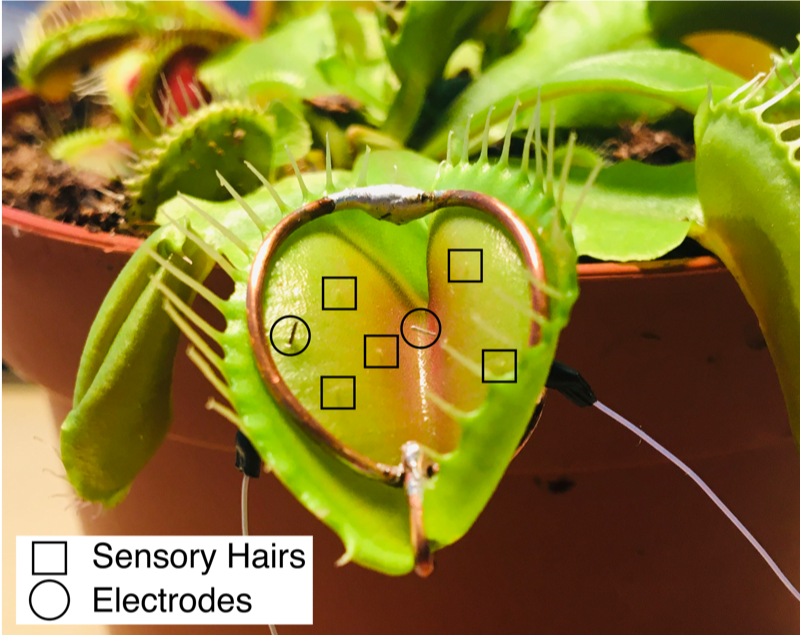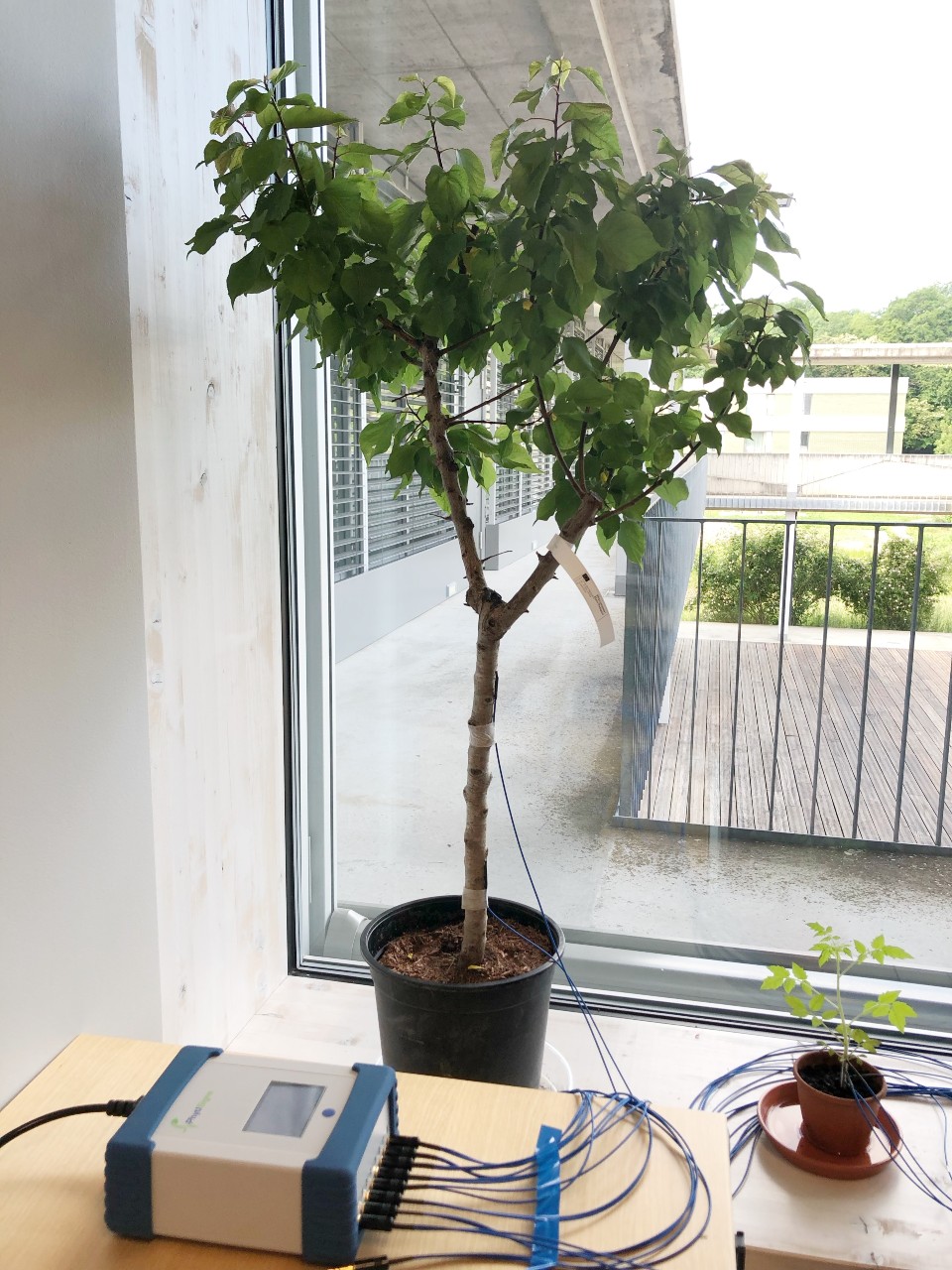
As part of a series of posts showing different plant behaviours that can be explored using PhytlSigns, we are starting with the classic experiment performed by John Burdon-Sanderson and inspired by CharlesDarwin. Venus Flytrap is a carnivorous plant which uses action potentials to catch and digest insects or small animals. Stimulation of sensory hairs induces one of the fastest signals in a plant’s world. These are electrical signals called action potentials. PhytlSigns sensors can easily and precisely register touch-induced action potentials. For demonstration purposes, a Venus flytrap trap was blocked in an open position and electrodes were placed on both sides of the trap.
Touching the trap petiole, edge of the trap or inner surface of the trap with a toothpick, does not cause any electrophysiological changes. However, even delicate touching of one of the sensory hairs, immediately induces rising action potentials visible in real time on a the screen or a smart device. Have a look at this short video to see PhytlSigns in action.
This is just one of many applications of plant electrophysiology and in this demonstration really helped a plant scientist share the wonder of plants with some eager students.




